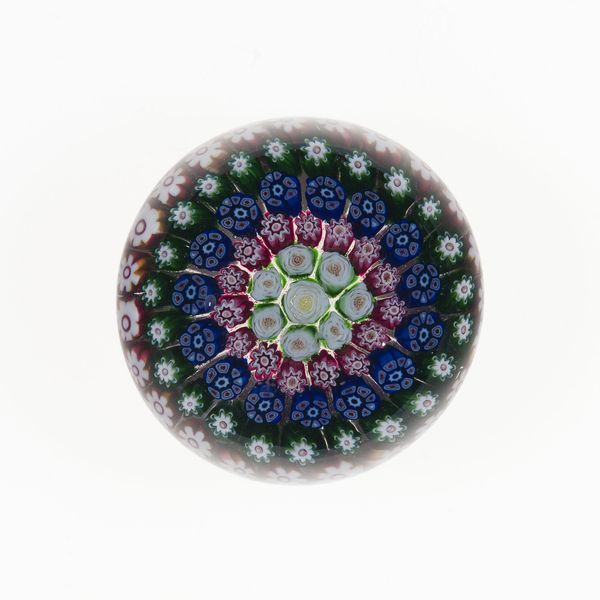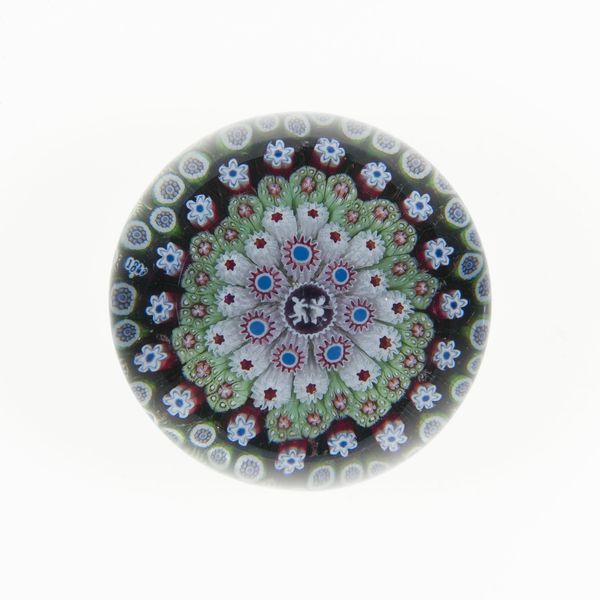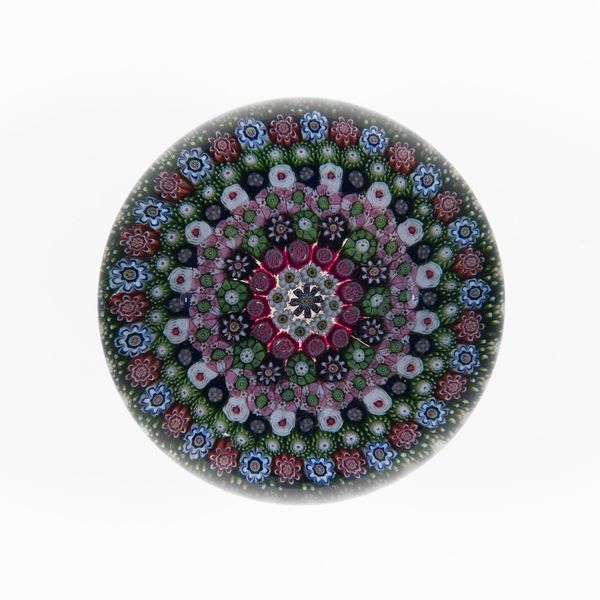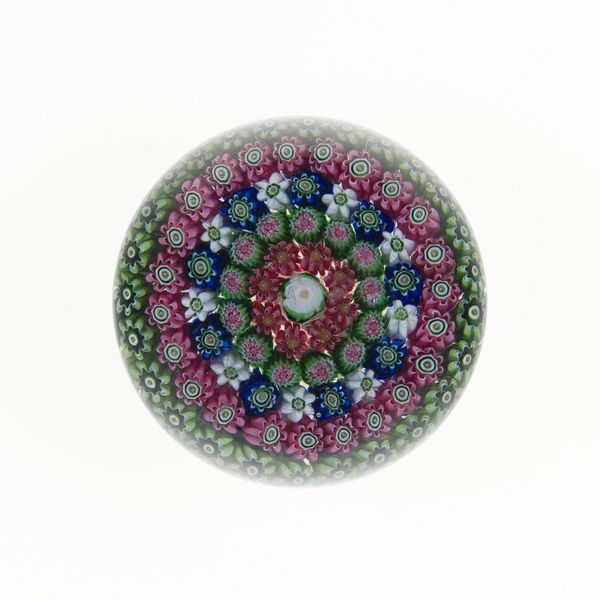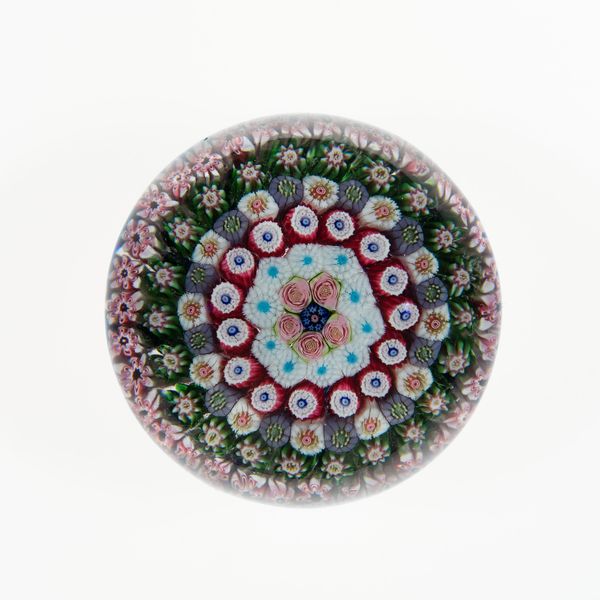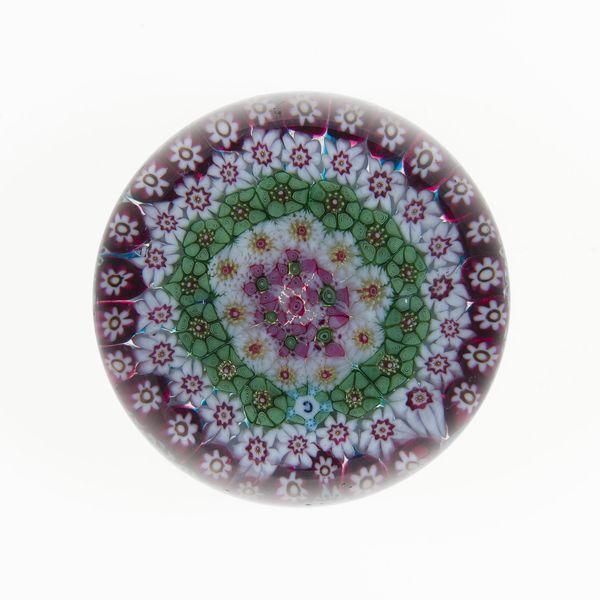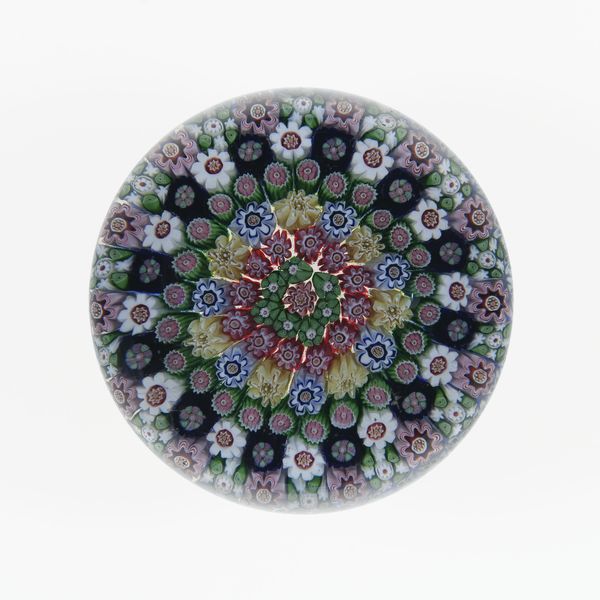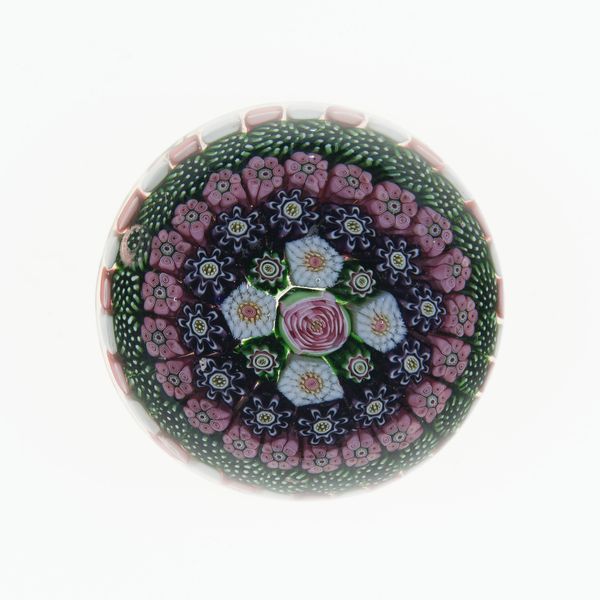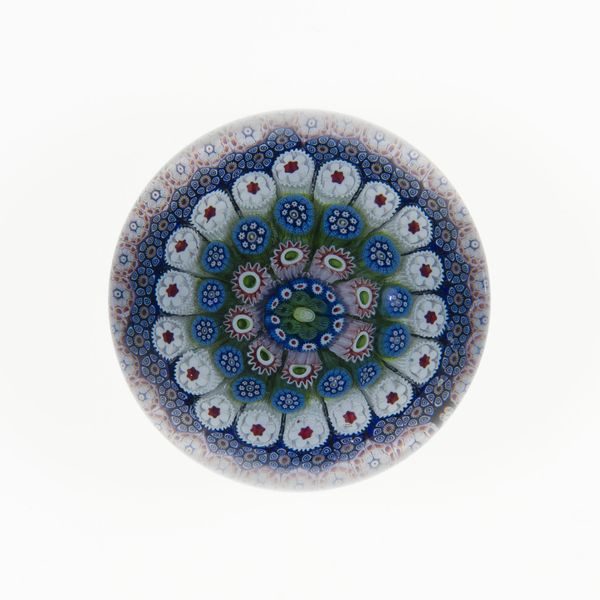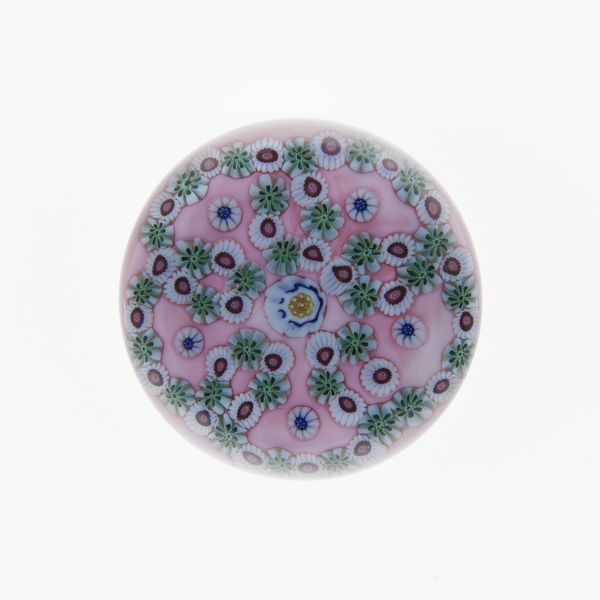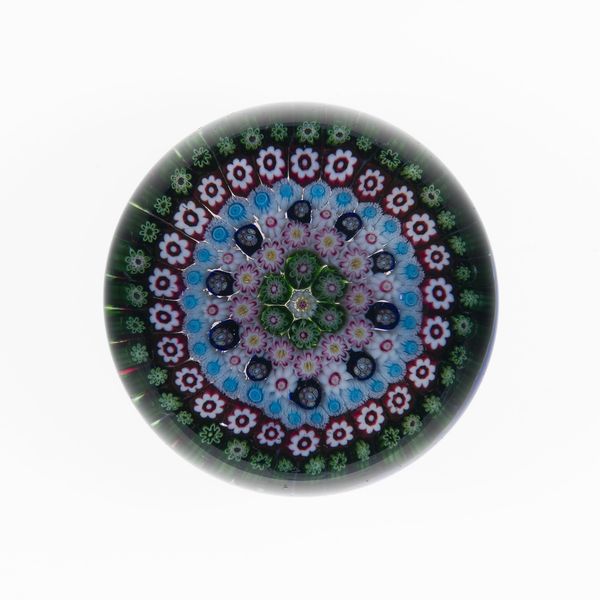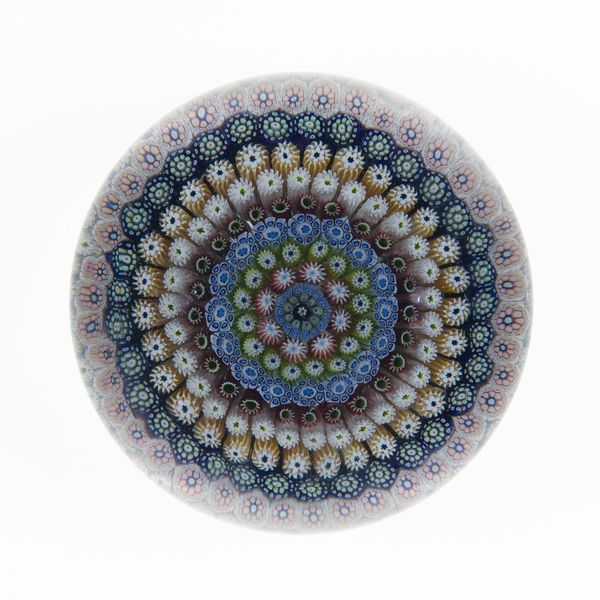
paper, glass
#
clear focal point
#
natural stone pattern
#
circular oval feature
#
worm eye perspective photography
#
3d printed part
#
round design
#
bright focal point
#
sculptural image
#
paper
#
glass
#
white focal point
#
round circular shape
#
decorative-art
Dimensions: Diam. 7.3 cm (2 7/8 in.)
Copyright: Public Domain
Curator: Looking at this 19th-century glass paperweight, attributed to the Clichy Glasshouse, the first thing that strikes me is the sheer complexity contained within such a small form. What are your initial thoughts? Editor: It has an almost hypnotic effect. I am reminded of peering into a kaleidoscope, or even an idealized representation of cellular structures. The precision is stunning. Curator: The "millefiori" technique used here is central to understanding the object. This involved creating tiny glass rods, each with a patterned cross-section, then arranging and fusing them together to form the design you see encased in clear glass. Consider the labor and skill involved! Each component a result of individual labor within the factory system, eventually leading to this final consumer product, a Victorian status symbol. Editor: Absolutely. And considering the context of the 19th century, there is the allure of controlled nature, isn’t there? Each floral design rendered not by natural processes but industrial mastery. I see echoes of scientific classification intersecting with aesthetics of abundance and excess associated with expanding capitalist systems. Who was permitted such delicate luxury in their workspace or study? Curator: Exactly, glassblowing had specific traditions passed through generations of artisans. Examining invoices or workshop records linked to objects like these provides crucial information about the economics of art and craft production during the era. We gain perspective into hierarchies of labor at play—from apprentices handling mundane tasks, up to skilled gaffers shaping molten forms. Editor: And it's also a statement of power and status. In an era increasingly defined by industrialization and alienation from the natural world, to possess a contained ecosystem, even a miniature one made of glass, suggests dominance. What does the ownership and display of an item like this tell us about class aspirations in the 19th century? What spaces of power did an object such as this exist within? Curator: Indeed. Beyond being merely decorative, these paperweights acted as signals that the owner held wealth sufficient enough both acquire decorative items like glasswork coupled both means, furthermore perhaps indicating patronage systems within art. That subtle display made silent arguments! Editor: Fascinating to consider this small sphere held and refracted larger social and political realities of its era. Curator: A seemingly simple decorative item offering rich insights to understand art, craft, and commerce of the nineteenth century!
Comments
No comments
Be the first to comment and join the conversation on the ultimate creative platform.
